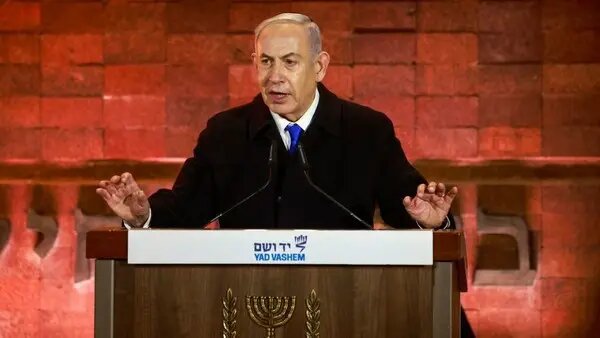Netanyahu under pressure to accept ceasefire deal

TEHRAN- The political bureau of Hamas has informed Egyptian and Qatari mediators that the organization accepts the text of the latest proposal to reach a ceasefire in Gaza.
The new proposal involves a framework of three stages, which includes many aspects that have been affected by the war, but the stages are not necessarily connected to one another.
In the three-stage formula, the text covers the main issues to reach a permanent ceasefire.
These are the exchange of Israeli captives held in Gaza in return for Palestinian prisoners, a process that will take place in different phases. There is a significantly larger volume of humanitarian aid entering the enclave, the return of all displaced Palestinians and the withdrawal of Israeli forces to the Gaza separation barrier along with all military sites and installations completely dismantled.
Among the notable amendments from the previous text that U.S. Secretary of State Anthony Blinken described as “extremely generous” to Hamas are the following:
On the 16th day of the first stage, indirect talks would commence regarding the second stage.
In previous texts, the Israeli terms revolved around a second stage that would have seen Hamas lay down its arms and leave the enclave, Israeli forces maintain a military presence in Gaza and Tel Aviv decide who rules the Strip after the war.
The guarantors to the latest agreement, Qatar, Egypt, and in particular the United States, saw Hamas was not budging on these specific Israeli terms despite enormous pressure from Washington to the extent that these conditions have been removed by the U.S. itself.
CIA director Wiliam Burns arrived in the Egyptian capital Cairo on Friday to oversee the changes.
Israeli media have reported that the U.S. was aware of the changes to the latest proposal that was presented to Hamas but did not inform the Israeli side, which experts say is something very hard to believe considering the extremely close ties between Tel Aviv and Washington.
Another key element of the ceasefire involves a change to the prisoners’ exchange deal.
In the previous text, all Israeli captives held in Gaza would have been released before indirect talks began on a sustainable ceasefire.
The altered agreement stipulates that captured female soldiers, believed to be five in total, along with the elderly, young and sick (believed to be 33 in total, among whom some that the Israeli military may have killed with its indiscriminate bombings) would be exchanged in the first stage in return for Palestinians held in Israeli prisons.
Hamas backed down on its demand of 400 Palestinian political prisoners in exchange for one Israeli female soldier held captive in Gaza to 50 Palestinian prisoners.
In the second stage, all remaining Israeli captives, including male soldiers, would be released in return for Palestinian political prisoners, some of whom are serving life sentences, based on the outcome of indirect talks that must end with a sustainable ceasefire.
Essentially Hamas has affirmed that if the Israeli side does not commit to a permanent ceasefire in the second stage it would not release the remaining male captives and the war would resume, with Israeli male soldiers still in Gaza.
The text also stipulates the reconstruction of Gaza, the entry of at least 600 aid trucks a day and other vital necessities, and the freedom of all civilians detained after October 7.
A Hamas official said that the Palestinian resistance movement was extremely flexible in reaching the agreement, and the ball is now in “Israel’s court”.
Pressure is mounting on the cabinet of Israeli Prime Minister Benjamin Netanyahu to accept the deal.
Hundreds of thousands of Israelis have taken to the streets calling on Netanyahu “to bring them home,” referring to the Israeli captives held in Gaza.
The Israeli army has failed to do so after seven months of military action, and the only time captives were released from the Palestinian territory has been through a ceasefire deal.
There is also international pressure, especially from Washington, on Netanyahu to accept the deal.
Analysts believe the administration of U.S. President Joe Biden is eager to see a ceasefire for two reasons and they both have nothing to do with sympathy growing by the White House for the suffering of Palestinians.
It is widely believed that Biden wants a ceasefire to enter the U.S. presidential election in November with a growing popularity amid a pro-Palestinian student protest movement sweeping across America.
The incumbent president’s popularity has also plummeted among the younger generation as many Democratic voters have grown disillusioned with his pro-Israeli position in the Gaza genocide.
Experts have also pointed to a second reason that the U.S. seeks a ceasefire deal, indicating that the Israeli invasion of Rafah and the ongoing bombing of Gaza will ignite other fronts in Lebanon, Yemen and Iraq to levels not seen so far.
Making matters worse for Netanyahu, many Israeli news outlets have noted that the terms of the ceasefire deal are not too dissimilar to the proposal Tel Aviv had previously confirmed with Egypt.
Leave a Comment